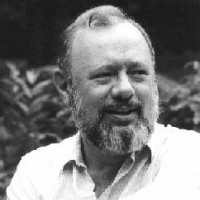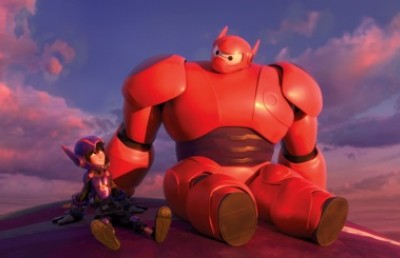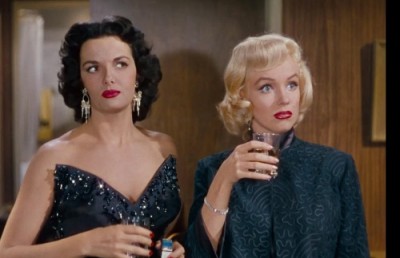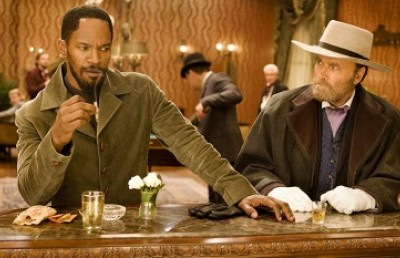A Continuation of the History of American Screenwriting 2000-2018, Part III
The Return of the Studio System

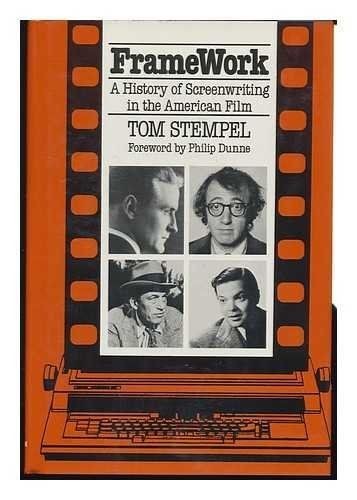
(Thirty years ago I wrote FrameWork: A History of Screenwriting in the American Film, the first such history. A second edition came out in 1991, and a third edition in 2000. That third edition is still in print. It occurred to me that perhaps it was time for a Thirtieth Anniversary Fourth Edition. I approached Syracuse University Press, the publisher of the third edition. The editor I dealt with thought the idea was “exciting,” and the reader she had who re-read the third edition and my outline for the new chapters agreed. But in the discussions at the publisher, the production department felt that it would cost so much to produce that they would have to charge more than they felt readers would pay, in spite of the money they have made over the last twenty years on the third edition. The editorial board listened to the discussion on both sides and decided not to do the fourth edition. Typical Hollywood story: the creatives loved it; the suits didn’t.
So what we have here is the material I gathered for the fourth edition, divided into three articles. The first one was about call “Little” films: low to medium budget independent films. The second part dealt with “Big” films: big budget films. This third part is about the return of the studio system. You will find more than a little overlap between them.)
Disney
When Walt Disney was making his classic animated films in the thirties and forties, his company was a very small one. He could focus on the making of the films and spent a lot of time working with the writers on the scripts, especially for the animated features. (Stempel, 1988, pp. 111-112) By 2000, the Disney Company was one of the largest and most successful studios in Hollywood, but it was also much more than a studio. Wikipedia describes is as “an American diversified multinational mass media and entertainment conglomerate.” It can no longer be a one-person operation, but depends on producers and related companies to create the content that the feeds the monolith. We saw that with the Todd sisters and Linda Woolverton on the Alice movies.
Sometimes that even means the writers drive the films. Terry Rossio & Ted Elliott were working on the script for Aladdin in 1992 for Disney, and they proposed a movie based on the Pirates of the Caribbean ride at Disneyland. They were turned down. As Rossio remembers, the executives’ response was, “Do a film based the ride?! That’s insane!” Ten years later the studio had begun to develop a script with Jay Wolpert and later Stuart Beattie, and Rossio & Elliott were asked if they were interested. They said yes, but only if they could do it their way: as a “swashbuckling Gothic romance.” The studio balked at the Gothic part until they said, “Look, the ride itself begins with a talking skull.” (Shewman, 2003, pp. 48-52)
Rossio & Elliott said (on the commentary track on the DVD of Pirates of the Caribbean: The Curse of the Black Pearl) that they were clear they were not writing a movie about pirates, but writing a pirate movie. They looked at the old pirate movies, both good and bad. They studied real life pirates to learn that they did not actually bury their treasure and did not have people walk the plank, but in pirate movies they do. The writers did not think the movie would be as big a hit as it was, so they were not thinking about a sequel. Then the studio decided to make two sequels simultaneously. So Rossio & Elliott had to decide if they were going to be two separate films, or connected. Elliott said (in the featurette “Charting the Return” on the DVD of Pirates of the Caribbean: Dead Man’s Chest) “that challenge was to make it seem that first film was ‘oh so cleverly designed to lead to the second and the third.’” The results were scripts that were incredibly full of entertaining characters and off-the-wall plotting, and the writers had to make diagrams as to who was where in what scene.
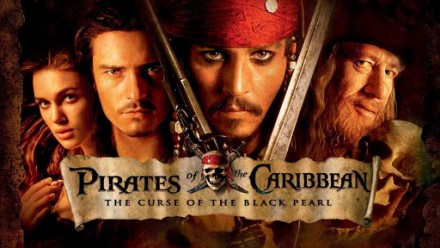
Needless to say, film critics, who generally do not understand screenwriting, thought the two sequels were not good. They were not alone. Johnny Depp (Captain Jack Sparrow) spent most of the Entertainment Weekly story (Breznican, 2011, pg 26) about the 4th film complaining about the scripts for 2 and 3. He mentioned talking to the director, Gore Verbinski, on 2 or 3, and saying of a place in the script, “I don’t really know what this means.” Verbinski replied, “Neither do I, but let’s just shoot it.” Most people reading that probably thought Verbinski did not think much of the script, but I suspect a more accurate reading is that he trusted the writers and what they were up to. The first Pirates trilogy were huge hits, but the quality of the writing fell off drastically in #4, Pirates of the Caribbean: On Stranger Tides (2011). It got better in #5, Pirates of the Caribbean: Dead Men Tell No Tales (2017), where the story was by Rossio and Jeff Nathanson, and the screenplay by Nathanson), but the quality was not up to the first trilogy. A Disney executive was quoted on the Internet as saying they would not want to make another Pirates movie without Johnny Depp, but artistically they might be better off trying.
Pixar
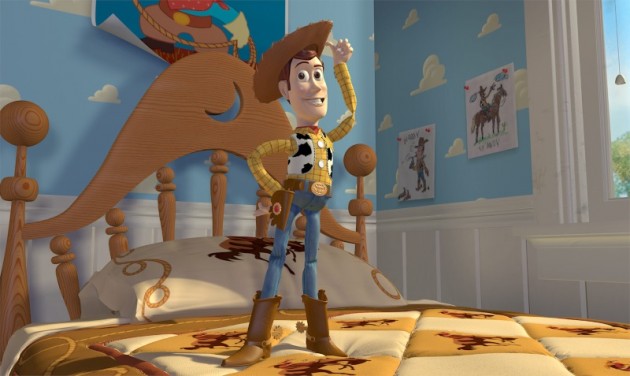
Disney animation had been revived in the nineties, but the films were not as successful commercially or critically acclaimed as those of Pixar, a smaller company which released its computer animated films through Disney. Writing for computer animation is not substantially different than writing for traditional hand-drawn animation. However, the approach that Pixar takes is different than the way Disney had used in later years and closer to what Walt Disney had done when his company was as small scale as Pixar started out to be.
The writing of a screenplay at Pixar is very much a collaborative process. In the case of Up (2009), it began with writer/director Pete Docter (Monsters Inc [2001]) getting the image of a house flying up into the sky. He wanted to team up with Bob Peterson, his Monsters Inc story supervisor who had been one of the screenwriters on Finding Nemo (2003). Peterson thought they should do a story about elderly people, not usually the main figures in an animated film. Then Docter and Peterson began to develop the story, which they eventually pitched to the “brain trust.” That’s a group of senior filmmakers, including John Lasseter (Toy Story [1995]), Andrew Stanton (WALL-E (2008]), and Brad Bird (The Incredibles [2004]. They hear not just the pitch, but the writers check in at various stages in development. Everybody involved throws out ideas, critiques, and suggestions. The result are richer, more detailed, and more complex animated features than other studios turn out. And much more successful, both with audiences and with critics. Pixar has a much greater success rate than any other studio. (Munso, 2009, pp.28-29)
Pixar started making short animated films, but it was about to go under when its first feature, Toy Story, became a huge hit. Disney, under Michael Eisner kept irritating Lasseter, the head of Pixar, in negotiations over profits, but fortunately the board at Disney voted Eisner out in 2005. In 2006 the new boss at Disney, Robert Iger, knowing you have to keep the talent happy, worked out an agreement to purchase Pixar and make it part of the company, an approach Disney later used on two other companies.
Unfortunately, in November 2017, John Lasseter was put on leave because of accusations of improper behavior, and in June 2018, he was let go completely from Pixar and Disney. His position as head of Pixar was taken over by Peter Docter, the writer-director of Up (2009), Inside Out (2015), and others. Lasseter’s position as head of Disney animation was taken over by Jennifer Lee, the writer-director of Frozen (2013). Both are talented and experienced, but it remains to be seen if they have the leadership skills needed.
Lucasfilm
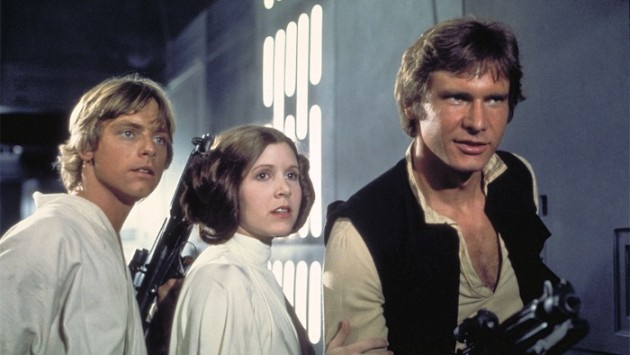
Lucasfilm was started as a small company by George Lucas in 1971. Lucas’s primary focus was on making movies that he wanted to make, not just make a whole program of films. The jewel in the crown of Lucasfilm was the series of Star Wars films. The Star Wars films were not noted for their screenwriting. As Harrison Ford famously told Lucas at one point while working on the first film, “You can type this shit George, but you sure can’t say it” (Pollock, 1983, p. 164). On the first trilogy, Lucas also had Willard Huyck, Gloria Katz, Leigh Brackett, and Lawrence Kasdan writing, either credited or uncredited.
On the second trilogy, Lucas wrote the scripts for the first and the third himself, and collaborated with Jonathan Hales on the second. Hales is an English writer whose credits include a 1985-1986 television series called Dempsey and Makepeace about a male and female cop team. I suspect Hales was brought in for Episode II because one of the main storylines is the romance between Anni and Amadala, and Lucas may have thought he would be better on the romantic dialogue. He wasn’t. Lucas, accepting the AFI Life Achievement Award in 2005, admitted he, Lucas, was the “king of wooden dialogue” (King, 2005). The characterization in the second trilogy was even flatter than in the first, and the second also included the creation of the worst character in the Lucas world, Jar Jar Binks. (For a more detailed analysis of the script problems with the second trilogy, see the chapter on it in my book Understanding Screenwriting, pp. 202-220.)
In 2012, Lucas announced he was stepping down from doing big blockbuster films, including the Star Wars films, to make smaller, more artistic films, none of which he has so far made. Kathleen Kennedy was brought in to run Lucasfilm, particularly the Star Wars franchises. In 2012 Lucasfilm was sold to Disney. Kennedy worked differently than Lucas. Rather than one writer, she used several. For the first film in the new trilogy, Star Wars: The Force Awakens (2015), she hired Michael Arndt, who had won an Oscar for writing Little Miss Sunshine (2006) and had written the screenplay for Toy Story 3 (2010). When she brought in J.J. Abrams to direct the film, Abrams took over writing the screenplay. Lawrence Kasdan joined the project as well. None of them are kings of wooden dialogue, and all have more of a sense of character than Lucas does. (For a more detailed look at the writing of the film, see my Understanding Screenwriting column here.)
The Force Awakens lets us know right away we are not in your father’s Star Wars universe. The little robot we first meet is not R2D2, but a more expressive one, BB-8. A stormtrooper is wounded and he…bleeds. That had never happened in a Star Wars film before. He takes off his helmet…and he is black. However, in the same film we also get Han Solo, Leia, Chewie, and the Millenium Falcon. The writers nicely balance out the new and the old. Lucas was not happy with the results, telling Charlie Rose on his interview program on December 25, 2015, that he felt the new film were written by “fans for fans.” Yes, they were. Abrams had said that the Star Wars movies were his favorites when he was growing up. For Lucas, the films were his personal world and he hated to see them change. But Abrams, Kennedy and the others were more in tune with modern audiences.
Jonathan Kuntz, a colleague of mine at Los Angeles City College, was interviewed about the Lucasfilm empire, and he made a good point that was not included in the article. Here is his outtake: “With Star Wars, what is surprising is how few features have been made (8 in 40 years) — until Disney, Star Wars was very much an under exploited franchise.” Kennedy is overseeing additional Star Wars films that are not part of the official canon. A year after Force Awakens came out, the company brought out Rogue One: A Star Wars Story, with a screenplay by Chris Weitz and Tony Gilroy from a story by John Knoll and Gary Whitta. The writers of the story had worked on the technical sides of the Star Wars films. Lucasfilm was using a development style not unlike Pixar. The story involved the events leading up to Star Wars: Episode IV: A New Hope (1977). That was followed a year later by Star Wars: The Last Jedi, another of the official Star Wars films. By this time the film had a lot more women characters than the previous films and the teenboy misogynist fans raised a stink about it on the Internet. Lucas did not comment on the fuss, or the movie. He had accepted that it was not his world anymore.
DC
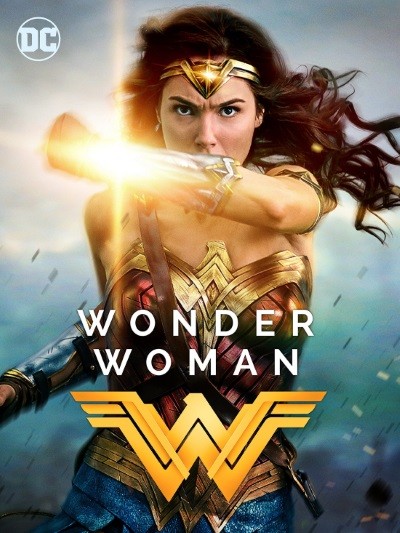
DC Comics, which has had many, many different names (you can see the Wikipedia entry for most of them), started publishing comic books in the 1930s. They were aimed at an audience of children and featured superheroes such as Superman, Batman, and Wonder Woman. Superman and Batman appeared in movie serials, television shows, feature animated films, and feature live action films. Since the comic books and the films were aimed at children, the writing both was simple and not particularly vivid. When Batman was done as a television series in the sixties, it emphasized the camp quality, complete with animated “Zaps!” and “Pows!”
In the sixties, through a series of mergers and buyouts, DC Comics became part of Time Warner and fell under the control of Warner Brothers. But Warners were not particularly protective of the rights. For the Superman films of the seventies and eighties, it farmed out the production to the Salkind Company, for whom the writing of the script was not of major interest. The script for the first one in 1978 was by Mario Puzo, David and Leslie Newman, Robert Benton, and uncredited, Tom Mankiewicz, who wrote about the experiences in his memoirs, My Life as a Mankiewicz. The three sequels made even less sense on the script level.
In the nineties producer Jon Peters realized Warners had been so sloppy about the rights that the studio no longer owned them. Peters picked them up and began to try to make a movie to be called Superman Lives! The demise of the project is shown in the 2015 documentary, The Death of “Superman Lives”: What Happened? The documentary interviews the various writers who worked on the project, and you can understand why the film was never made. Kevin Smith, the first writer hired remembers Peters telling him what he wanted in the movie: “No suit. No flying. And get in a big spider.” Obviously a producer who was clueless as to what the appeal of the material was.
In the 2000s and the 2010s, Warners has tried three times to revive Superman with some commercial, but not so much critical, luck. The scripts for all three, by a variety of writers, have all been criticized as messy, which given the number of producers on each one is not surprising. There does not appear to be any executive control, either from Warners or from DC. Part of the problem is that Warners has traditionally in recent years focused on director-driven projects. That leads to films that have big, flashy sequences but simply do not hold together, particularly with the longer running times. Superman Returns (2006), runs 154 minutes; Man of Steel (2013) runs 143 minutes; and Batman v. Superman: Dawn of Justice (2016) runs 151 minutes. The studio also has not cast the films well. As Superman Brandon Routh in Superman Returns was a block of wood, and Henry Cavill in the other two was not much better.
Warners and DC did finally come up with a critical and commercial winner in 2017 with Wonder Woman. In spite of the fact that the script was not all that good. The story was written by Zack Snyder & Allan Heinberg and Jason Fuchs. Snyder is primarily a director of comic book movies and was involved in the last two Superman movies. Jason Fuchs is primarily an actor with a few undistinguished writing credits. Allan Heinberg, who wrote the screenplay, has produced and written for many different television shows, including Sex and the City, Grey’s Anatomy, and other shows with female leads. He also wrote for the Wonder Woman comic books. One of the difficulties studios have had in doing movies based on comic books is that many screenwriters simply do not know the comic books. It helps to know what you can steal from the comics.
As often happens with the first film about a superhero, the writers feel it is necessary to give us the origin story of the hero. In Wonder Woman that means after a picture from World War I is delivered to Diana Prince, we go into a lengthy flashback of her life on Themysirca, where she is the only child on an island run by women. The dialogue here is rather flat and both Robin Wright and Connie Nielsen cannot make it very interesting. But we do get the matriarchal culture of the island, something we have certainly not seen before in superhero movies. Then Diana goes to London and eventually to the front lines in World War I, where she strips down to her Wonder Woman outfit and leads a charge. Gal Gadot is not a particularly compelling actress in the dialogue scenes, but she comes into her own in the action scenes, which make the picture work, although the final confrontation falls into the typical DC clichés of the hero and villain standing in an open space throwing trucks at each other. The picture became one of the highest grossing superhero movies of contemporary times.
The Marvel Cinematic Universe
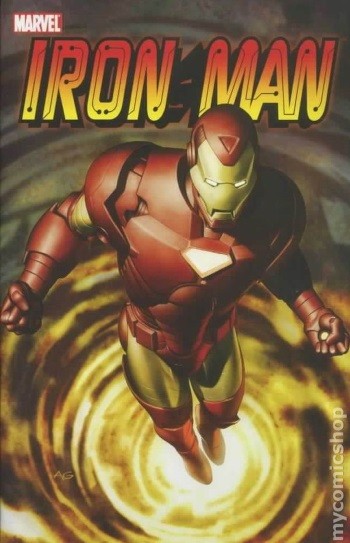
In the forties and fifties, the Marvel comics were imitations of the DC comics. Its lead superhero was Captain Marvel, an obvious rip-off of Superman, as Captain Marvel Jr. was of Superboy. In the sixties, while the DC comics stayed the same, Marvel did not. One of their chief writers, Stan Lee, created the Fantastic Four in 1961. He was tired of writing the conventional comic book stories and intended to quit. His publisher Martin Goodman asked him to do a comic about a team, a rip-off of DC’s Justice League of America. Lee talked to his wife Joanie, who told him he should write it in his own way. If he got fired, well, he was about to quit anyway. Lee said later she was “really responsible for a whole line of Marvel comics in a way” (Goldsmith, 2005, pp. 64-65). The Four were not brave, heroic types, but more realistic characters who argued among themselves. The usual teenage sidekick was the unusual Johnny Storm, who tended to throw fireballs at other members of the team. Goodman was not impressed, but let it be done.
The Fantastic Four was successful enough that the following year Lee created Spider-Man, again with reluctance on Goodman’s part. The teenager was the hero, with regular teenage family problems, which Goodman objected to, (Konow, 2002, pg. 21) but having Peter Parker, Spidey’s real name, a typical teenager is why the series became a great cult hit. Spider-Man picked up on what the other media were doing: appealing to the teenage market. It was in its own way the equivalent of Rebel Without a Cause (1955) and the Beach Party movies of the early sixties. When Star Wars (1977) and Superman the following year showed that there was a large audience for comic book movies, Hollywood began to make more of them.
Before that, there had been a number of Spider-Man television series, both live action and animation, made for kids. It was still difficult to get studio people to take the genre seriously, since the studio executives tended to think of comic book movies and television as either just for kids or as camp. That was the problem of negotiating film by film with different studios and/or different producers, as we saw with the DC comics. Slowly Marvel began to get back the rights that were scattered around various studios. When Sony’s early 2000s Spider-Man films made a lot of money for Sony, but not as much for Marvel, Marvel decided to get into production of its own films.
For its first film with this approach, they selected Iron Man (2008). There had been several attempts since 1990 to develop a script for Iron Man, as per Wikipedia. In spite of the previous scripts that had not worked, Marvel decided to go with the character, since they were interested in selling toys as much as making movies. When they did focus groups with children, they discovered the kids liked Iron Man the best of all the Marvel characters (Crust, 2018, pg. E4). 1
When Jon Favreau came on as director, he decided to let the actors do some improvising in the dialogue scenes (Collis, 2018, pg. 76). The results were rather clumsy, since the humor did not flow out of the script and often stuck out like a sore thumb. On the other hand, it gave an interesting tone to the film, and was the beginning of Marvel not only allowing humor, but encouraging it. By Iron Man 3 Shane Black, who had written Iron Man star Robert Downey Jr.’s 2005 film Kiss Kiss Bang Bang, came on to work on the script and brought his and Downey’s sense of humor to the script so that the humor fits. It sets the pattern for several other films in the Marvel Cinematic Universe.
Instead of going the director-focused route of Warners and DC, Marvel went the Pixar route and spent time focused on the writing. Like John Lasseter’s “Brain Trust,” Marvel has a group of executives and writers who work with the writers on a project. Justin Theroux came into Marvel to write Iron Man 2, and liked the process. He had long sessions with Downey, Kevin Feige (the John Lasseter of Marvel), and producer Jeremy Latcham. Theroux recalled,
Those guys had the benefits of doing [the first Iron Man] and were well versed in the pitfalls and problems of where certain ideas could take you. They were great at helping me eliminate certain things that I otherwise might waste my time spinning my wheels on…
To their credit, they really do give everyone involved in the process a blank slate to start with. That’s a blessing and a curse. In the end, it always ends up being beneficial to them. You go in knowing anything is a possibility and they don’t shut any doors or windows to what you want to do until it becomes either cost-prohibitive or just doesn’t make sense with the brand…
I feel like Marvel has a great tradition of screwing the next writer. When they first started interweaving it [cameos of other Marvel characters] were considered afterthoughts. Now they are starting to put a lot more thought into it and seeing it as a larger scheme… There’s just enough cross pollination to make it interesting, but not enough to start eating other people’s sandwiches (Clines, 2010, pp. 66-67).
Slowly Marvel was building up what they called the Marvel Cinematic Universe, where characters and plotlines show up in several different films. The bits Theroux saw as “afterthoughts” were becoming the heart of the Marvel movies. Zak Penn saw the process when he was involved in the development of the story for The Avengers (2012):
Marvel has a really good group of young executives who are the keepers of the flame (led by Kevin Feige) and I was constantly in meetings with them where they would show me what was going on. For instance, in Thor (2011), once they cast Tom Hiddleston as Loki, they thought this guy is great and wanted him as the villain for The Avengers. And that’s when those discussions began. So, it was a weird, long process, which culminated in 2010 when I finally wrote the script — a script that had already gone through about five different iterations, i.e. who was playing the Hulk, who wasn’t playing the Hulk, and all of the different things that were happening that affected the story…
I was officially attached to The Avengers in 2006, although we had been kicking around the idea since 2003. For me, it was a four-year process. During that time, my job was to keep an eye on all the other movies, write in stuff that could be set up and paid off, and with the help of the Marvel executives, create an overarching story or a Bible for the five movies, so we would know where we were going and where The Avengers would be. We didn’t want to be stuck in the end with a bunch of characters we didn’t want to use. Or not having set up certain characters (Sells, 2012).
This was the kind of cross pollination that had been common in comic books, but not used often in films. The comic book creators knew their readers were fanatics and could follow multiple storylines in a way that movie audiences traditionally had not. It was a risk that the makers of the Marvel Cinematic Universe were willing to take. They guessed right that the attention span of its audience was a lot longer than has generally been assumed by society, although for viewers who do not see every Marvel film, it can be very confusing. It also, as Theroux and Penn told us, made it difficult for the writers. It makes it essential to have screenwriters who can keep an awareness of all the moving parts of the Universe, helped by the executives’ collaboration with the writers.
The company briefly had a writers program for younger writers. Nicole Perlman got into the program in 2009 along with four other writers. Each writer was asked to take a Marvel character or characters and write a script for them. Perlman selected the Guardians of the Galaxy because nobody knew about it, which meant she could take whichever characters she wanted. She collaborated with the story people, just like the regular writers. Eventually Marvel decided to go with Guardians and brought in James Gunn to write the final draft. Perlman says, “We always knew that the tone of the movie was going to be sort of irreverent, sassy and funny. And there was a lot of comedy that Marvel definitely wanted to bring somebody on who would bring a very specific visual style and a lot of humor. James definitely did that for sure” (Stecker, 2014). Marvel had learned from Robert Downey Jr. that good comedy adds a little flavor to the Universe.
Not too much comedy, however. In 2014 Marvel released Ant-Man. Its first draft screenplays were written by the English writers Edgar Wright and Joe Cornish. Wright was the co-writer and director of Shawn of the Dead (2004) and Hot Fuzz (2007), which bring a nice snarky humor to genre satire. He was scheduled to direct but then had a falling out with Marvel, and was replaced as the director. Wright may simply have wanted to take the humor too far. (For a more detailed analysis of the script and film, see my column on it here.)
Just as DC had been trying for decades to make a Wonder Woman film, Marvel had been trying to make a film of their Black Panther comic. Just as executives were afraid that the male audience would not show up for Wonder Woman, which they did, the executives were afraid the white audience would not show up for a superhero movie in which the superhero and the supporting cast (except for one actor and the required Stan Lee cameo) are black. Those executives were wrong as well.
One of the flaws of the superhero movies is that the first one tends to be what is called in the trade an origin story. (You may remember that was something of a problem with Wonder Woman.) Ryan Coogler and Joe Robert Cole, the two writers of the screenplay, start in the middle of things. T’Challa’s father has died and he takes over as King of Wakanda, an African country isolated from any invasion by colonialists. They have found a miracle mineral vibranium, the strongest substance in the universe… O.k., that tells us we are in a comic book world, but Coogler and Cole give us the story with so much speed and action that we are busy running to catch up to pay a lot of attention to the natural irregularities in the story. Besides, we are in the Marvel Universe, where Tony Stark flits around in an iron suit that no human being could actually move in. There are always these kinds of illogical elements in the superhero comics. What Coogler and Cole do is give us more than enough entertaining elements to keep us occupied.
We get a great gallery of characters, almost all of them black. And they are a large variety of characters, not a stereotype in the lot. And the writers give them all a lot to do, such as the king’s wise-ass little sister. She is not the do-nothing bratty kid sister Princess Leia as in the first Star Wars trilogy. This little sister is the Wakanda equivalent of Q in the Bond films. Remember that Marvel appreciates humor in their films. We get a lot of detail about the culture of Wakanda, including the fact that the king’s guard is mostly a really tough group of women who could give Wonder Woman and her amazons serious trouble. The world of Wakanda is very much a black culture.
In other words, it is entertainment. And in spite of what the executives feared, it became a monster hit, just as Wonder Woman had a few months before.
By the time of Black Panther, Marvel was also owned by Disney, so here will be sequels. Lots of sequels…
Bibliography
Breznican, A. “High Seas, High Stakes,” Entertainment Weekly (May 13, 2011).
Goldsmith, J. “The Fantastic Four’s Fantastic Four,” Creative Screenwriting, (July/August 2009).
Clines, P. “Now Playing: Iron Man 2,” Creative Screenwriting, (May/June 2010).
Collis, C. “Forging Iron Man,” Entertainment Weekly (March 16/23, 2018).
Crust, K. “Tracking a bigger picture,” Los Angeles Times, (March 23, 2018).
King, S. “Lucas Earns His Own Star,” Los Angeles Times, (Jun 11, 2005).
Konow, D. “Stan Lee on Spider-Man,” Creative Screenwriting, (May/June 2002).
Mankiewicz, T., and Crane, R. My Life as a Mankiewicz (2012) Lexington: University Press of Kentucky.
Munso, D. “Sky High,” Creative Screenwriting (May/Jun 2009).
Pollock, D. Skywalking: The Life and Films of George Lucas (1983) New York: Harmony Books.
Sells, M. “Assembling The Avengers for the Big Screen: Interview with Screenwriter Zak Penn,” Script Magazine (May 8, 2012). Accessed August 28, 2017.
Shewman, D. “Pirates of the New Sensibilities: Terry Rossio & Ted Elliott,” Creative Screenwriting (July/August 2003)
Stecker, J. “Nicole Perlman Q&A: How Guardians of the Galaxy Went From a Writers Program Project to Record-Breaking Film,” Script, (August 8, 2014). Accessed March 30, 2018.
Stempel, T. FrameWork: A History of Screenwriting in the American Film (1988) New York, N.Y.: Continuum; Second edition (1991), Continuum; Third Edition (2000), Syracuse, N.Y. Syracuse University Press.
__________ Storytellers to the Nation: A History of American Television Writing (1992) New York, N.Y. Continuum; Second edition (1996), Syracuse, N.Y.: Syracuse University Press.
__________ Understanding Screenwriting (2008) New York: Continuum.
General Sources
Creative Screenwriting (1999-2011)
www.creativescreenwriting.com (2013-2018)
Entertainment Weekly (1999-2018)
Internet Movie Database
Journal of Screenwriting (2010-2017)
Los Angeles Times (1999-2018)
L. A. Weekly (1999-2018)
Script Magazine (2005-2011)
www.scriptmagazine.com (2011-2018)
Sight & Sound (1999-2017)
Wikipedia
Written by (1999-2017)
Variety (W) (2000-2012)
Notes
- The information in this article comes from Ben Fritz’s book, The Big Picture: The Fight for the Future of Movies (2018: New York; Houghton Mifflin Harcourt). The article is an interview with Fritz in the Los Angeles Times that appeared a few days before I finished up this article, so I did not have time to get the book and read it before finishing and sending the article. ↩

